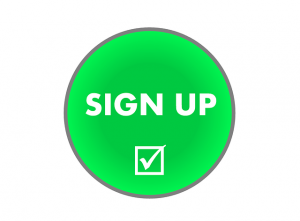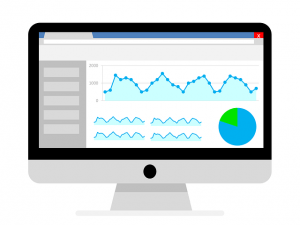Smart marketers put a lot of effort into driving traffic to their website through a variety of channels. On social media channels, they may provide a tidbit of helpful info, then direct the reader to their website to learn more. Blogging, of course, is another excellent way to drive traffic to your site, as are webinars, checklists, videos, and other helpful content. Writing guest articles can get your name out there and lure visitors into learning more about you. Now that you’re getting all this traffic to your site, you need to convert it to a sale. Here are a few tips on getting more conversions out of your website traffic.
Make your website easy to navigate
 Nothing frustrates a website visitor more than a bad user experience, including a slow loading site or difficulty finding the information needed quickly. If people are starting their user experience on the home page of your website, have the following in place to make their search a bit easier and more intuitive:
Nothing frustrates a website visitor more than a bad user experience, including a slow loading site or difficulty finding the information needed quickly. If people are starting their user experience on the home page of your website, have the following in place to make their search a bit easier and more intuitive:
Add a search bar
People will bounce off your site if they can’t quickly find what they’re looking for. Have a search bar that allows them to search for their topic and get easily pointed to relevant pages.
Have a robust navigational menu
Searchers will intuitively look to the main navigation menu to find what they need. Make sure your pages are organized well so visitors can quickly find the content they want.
Have helpful internal links on your site to related content
Chances are you have more than one resource on your page with the information searchers want. Create internal links within your website to relevant content so they can get the most out of the content you have and can lead to better conversions on your site.
Make the site easy to read
Content should be easy to read on your website, broken down into sections, bullets, and lists, so it’s easily skimmed for relevant information. Use readable fonts; now is not the time to get creative with your fonts. Here’s a helpful list of user-friendly website fonts.
Tell visitors what they should do on your website
 Strong and varied calls to action on a website play a significant role in converting traffic. Visitors need to be told what action to take next, especially if they’re visiting your site for the first time. Keap provided some great examples of strong CTAs:
Strong and varied calls to action on a website play a significant role in converting traffic. Visitors need to be told what action to take next, especially if they’re visiting your site for the first time. Keap provided some great examples of strong CTAs:
“Take me to my coupon.”
“Show me my credit score.”
“Click here to save on my carwash.”
“Schedule my free webinar.”
“Shop now to find more deals.”
Remember, if someone is on your site, you’ve already won by getting their attention. Good CTAs keep their attention and increase your chance of converting them from tire-kickers to a qualified lead.
Capture contact information
Obtaining a visitor’s name and email address often goes together with CTAs, especially if that call to action is to download a coupon, ebook, or checklist. They may not be interested in working with your small business now, but that doesn’t mean they can’t be nurtured through email blasts or other forms of communication. Of course, always get their permission to add them to your list!
Have various content for each step of their buying journey
Most likely, visitors will come back more than once to your site if they’re remotely interested in what you have to offer. Make sure you have content that aligns with where they are in the buying cycle. First-time visitors will want to have an overview of who you are and what you do. As they move through the decision process, they may need more robust content such as case studies. And don’t forget to vary your content; people consume information in different ways to have articles, videos, infographics, and checklists to meet different styles of content consumption. This will help with conversions!
Watch your analytics and adjust
 Are you getting a lot of traffic that bounces off your site? Take the time to look at what pages people visit on your website and where they go from there. Why are they leaving without downloading something, clicking to another page, or filling out a contact form? You are losing conversions if you don’t know what is going on. If you have specific pages that seem to bounce people off your site consistently, it’s time to take a closer look at what that page is lacking. It might be technical, like a slow-loading page or broken link, or it might be missing a call to action or contact form.
Are you getting a lot of traffic that bounces off your site? Take the time to look at what pages people visit on your website and where they go from there. Why are they leaving without downloading something, clicking to another page, or filling out a contact form? You are losing conversions if you don’t know what is going on. If you have specific pages that seem to bounce people off your site consistently, it’s time to take a closer look at what that page is lacking. It might be technical, like a slow-loading page or broken link, or it might be missing a call to action or contact form.
What you can do after they leave your site
Not everyone is willing to take the next step when they visit your site, but that doesn’t mean your opportunity is lost. Here are a few ideas to keep those exiting visitors engaged:
- Add an exit pop-up – An exit-intent pop-up appears when you intend to leave a website. Your mouse cursor heads up to that “X” in your browser, and the action triggers a pop-up. Offer them a reason to stay on your site, whether it is a discount code or a lead magnet. If not that, invite them to sign up for your email list.
- Remarketing – A remarketing ad is an advertisement that displays for consumers who have interacted with your website in some way on a previous occasion. For instance, a consumer discovers one of your blog posts via Google search, then visits Facebook and sees an ad for your product. According to WordStream, remarketing ad impressions positively correlate with conversions.
Focusing on website conversion is an often overlooked component of a small business marketing strategy. These are several tactics that you can utilize to turn your website traffic into qualified leads. Try some of the suggestions above to see how to increase your lead flow.
- Marketing Tactics That Your Small Business Can Do for Free - January 10, 2024
- How to Create Images for Your Small Business Website - December 6, 2023
- How Small Businesses Benefit from Referrals - November 6, 2023





